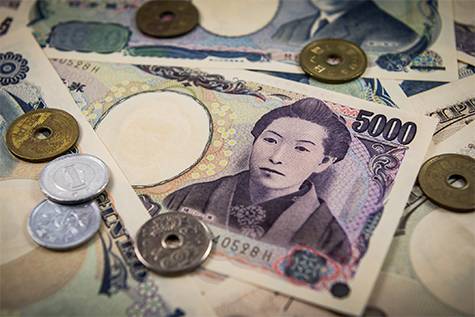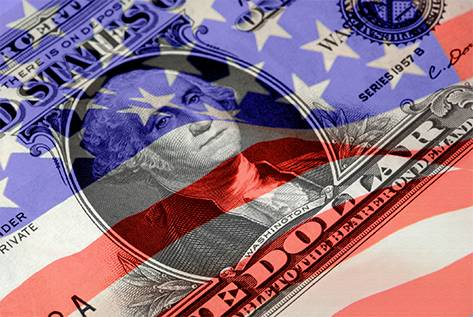Official data showed US personal spending up 0.5% in July, matching expectations and up from 0.3% in the previous reading.
- Renewed Inflationary pressures on BOJ
- Bullish remarks from BOJ Governor Kazuo Ueda
Yen rose in Asian trade on Friday against a basket of major rivals for the first session in three against the dollar after Tokyo consumer prices data showed renewed inflationary pressures on policymakers.
Yen is about to mark the second monthly profit in a row, following more aggressive remarks by BOJ Governor Ueda, which boosted the odds of a third interest rate hike this year, in turn pressuring yen carry trades.
The Price
The USD/JPY pair lost 0.25% today to 144.65, with a session-high at 145.07.
The yen lost 0.3% against the dollar on Wednesday following strong US GDP growth data.
Inflation
Official data showed Tokyo’s consumer prices up 2.4% y/y in August, beating estimates of 2.2%.
Japanese prices continued to accelerate above the 2% official target, in turn paving the way for another BOJ rate hike this year.
Monthly Trades
Yen is up 3.5% so far this month against the dollar on track for the second monthly profit in a row.
The gains came as traders continued to unwind their yen carry trades, amid full pricing for a US rate cut in September and after recent remarks by Ueda.
Ueda
A special National Diet session was held last Friday to discuss the Bank of Japan’s surprise move to raise interest rates last month and normalize policies.
Kazuo Ueda said that a rate hike in July was in line with the central bank’s economic outlook, asserting the bank is ready to adjust its policies if the economy moved as expected.
He said that recent changes to the monetary policy were suitable, and he warned from any sudden moves in the forex impact, the impact of such moves on prices and wages.
Ueda said that extreme volatility in the exchange price impacts inflation outlook.
He believes that interest rates could reach neutral levels if data matches the outlook until 2026.
Japanese Rates
Following Ueda’s speech, traders put a 70% chance for a December rate hike by the Bank of Japan.
US stock indices rose on Thursday after a batch of positive employment and growth data.
Earlier government data showed US GDP growth at 3.0% in the second quarter, passing estimates of 2.8%, and up from 1.4% in the first quarter.
US unemployment claims fell to 231 thousand in the week ending August 24 from 233 thousand in the previous reading.
Now investors await personal spending data, the Federal Reserve’s favorite inflation gauge, tomorrow.
On trading, Dow Jones rose 1.1% as of 17:16 GMT to 41,509, while S&P 500 rose 0.8% to 5641, as NASDAQ spiked 1.2% to 17,760.
- US crude stocks and production decline
- Supply disruptions persistent in Africa’s biggest oil producer
Global oil prices rose over 3% in American trade on Thursday, resuming gains after a two-day hiatus, and approaching two-week highs on US demand hopes.
Earlier data showed US crude stocks fell to seven-month lows, while crude output slowed down last month, as various US economic sectors rebounded strongly in the second quarter.
Prices
US crude rose 3.4% today to $76.87 a barrel, with a session-low at $74.08.
Brent rose 2.7% to $79.53 a barrel, with a session-low at $77.05.
US crude lost 1.8% on Wednesday, while Brent shed 3% on active profit-taking off two-week highs.
US Stocks
The Energy Information Administration reported a drawdown of 0.8 million barrels in US crude stocks last week to 425.2 million barrels, while analysts expected a drop of 2.7 million barrels.
Gasoline stocks fell 2.2 million barrels to 218.4 million barrels, while distillate stocks fell by 0.3 million barrels to 123.1 million barrels.
US Output
The EIA also reported a drop of 100 thousand bpd in US crude output last week to a total of 13.3 million bpd, down from the record high of 13.4 million bpd.
US Growth
Earlier government data showed US GDP growth at 3.0% in the second quarter, passing estimates of 2.8%, and up from 1.4% in the first quarter.
Libyan Output
Goldman Sachs expects the ongoing Libyan production outage to be short-termed, estimating a drop of 600 thousand bpd in September, and 200 thousand bpd in October.
Libya is normally producing 1.2 million bpd, with most of its output exported to global markets, mainly Europe.
Libya is torn apart by two competing governments in Tripoli and Benghazi, with the Benghazi government halting production amid a dispute with the Tripoli government about who should lead the Central Bank.
Forces in eastern Libya, controlled by General Haftar, have the ability to shut down large swathes of production and infrastructure in the east.
Disclaimer: The copyright of this article belongs to the original author. Reposting this article is solely for the purpose of information dissemination and does not constitute any investment advice. If there is any infringement, please contact us immediately. We will make corrections or deletions as necessary. Thank you.







